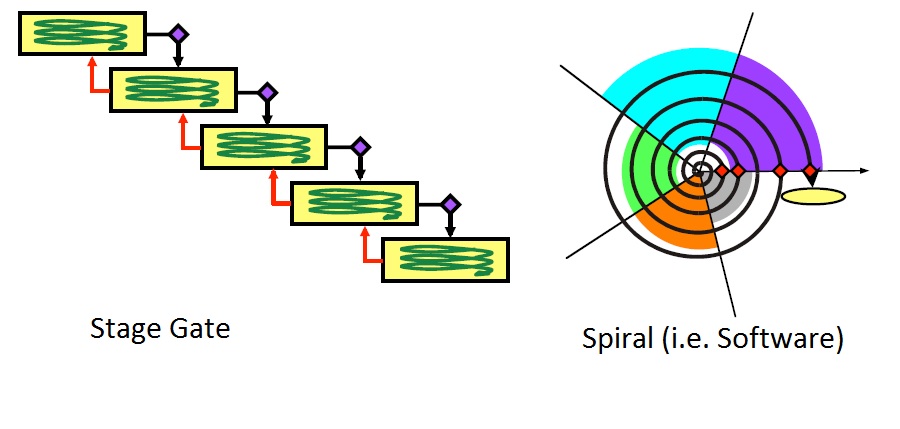There is a wide spectrum of product development processes, from stage gate to spiral processes. Stage gate processes are able to stage scope and investment decisions and are typically employed in capital intensive industries. Spiral processes take advantage of many repetitions of the design-build-test cycle and are typically employed in software development. There are many variants in between.
To best tailor the product development process for the organization, it is important to understand the:
- business and strategy of the organization
- architecture and complexity of the product
- product/project schedule, budget, and requirements
- risks and uncertainties
- needed iterations in the process
- capability and culture of the organization, including Global aspects
- customers, stakeholders, and suppliers
- best practices
The resulting product development process is then “systems engineered” as it is an integration of systems and systems elements – technical, process, and people.
There are many useful methods to choose from during this design process, including:
- Design Structure Matrix (Eppinger)
- Agile Methods
- Lean Methods
- Model Based Engineering
- Collaborative Supplier Integration
- Risk-based Planning
- Quality Approaches
A key aspect of product development is dealing with all the risks and uncertainties, which means iteration is inherent in the process. There are both planned iterations and unplanned iterations (to fix it when it’s not right). It is important to understand the linkages, interactions, and drivers behind how the iterations will happen. From that understanding, iteration can be accelerated through information technology, coordination techniques, or decreased coupling. After that, by prioritizing risks, planning the needed iterations, planning the integration and test activities, and scheduling reviews to control the process, the project risks can be addressed.
The process must also be tailored to the organization, specific people, and key stakeholders. This is probably the most difficult part, as it is all about dealing with people, managing change, and shifting cultures. It is important to pick and choose the most important methods, implement them, and sustain them, in a practical way. Too many processes fail because they are not used, unwieldy, inflexible, not fully coherent, too conservative, too bureaucratic, take too many resources, or are only partly implemented. Beyond process definition, there is training, coaching, fine-tuning, and ensuring the team sees that the change is in their self-interest to adopt, and really “owns” any new processes.
While overall improving the process is a complex and difficult initiative, having a competitive Product Development process is key to quality products, low costs, speed to market, satisfied customers, and good business.

